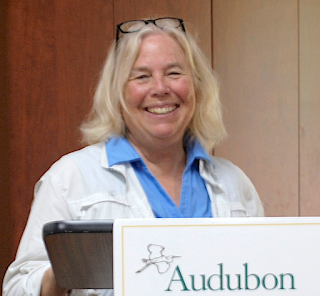Bluebirds at Lettuce Lake Park
%20Mary%20Miller.jpg)
By Sherry Keller V olunteer Bluebird Monitor and Tampa Audubon board member Photo of Sherry at one of the bluebird nests she monitors. Photo by Mary Miller Years ago, Tampa Audubon placed three bluebird nest boxes near the Lettuce Lake Park playground, but for some reason, bluebirds never found them. There are plenty of Eastern Bluebirds near the park, but I rarely see them in the park. Last summer, I decided to get serious about bluebirds at Lettuce Lake. I began monitoring the nest boxes on a regular basis. At first, the only activity I found was wasps. My routine was simple - open the box, knock down the wasp nest, run, then come back the next week and do it all again. By the end of the summer, the wasps had given up! Then in February, Mary Miller, Alan Bailey and I decided to move the boxes to better locations. Surprise! A pair of Carolina Chickadees was building a nest in the first box we tried to move. We left that box in place, but moved the other two. As soon as the chickadee...

%20(500%20%C3%97%20334%20px).png)

